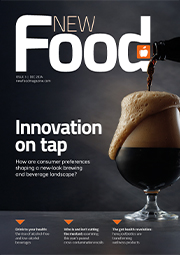Safeguarding herb and spice authenticity
- Like
- Digg
- Del
- Tumblr
- VKontakte
- Buffer
- Love This
- Odnoklassniki
- Meneame
- Blogger
- Amazon
- Yahoo Mail
- Gmail
- AOL
- Newsvine
- HackerNews
- Evernote
- MySpace
- Mail.ru
- Viadeo
- Line
- Comments
- Yummly
- SMS
- Viber
- Telegram
- Subscribe
- Skype
- Facebook Messenger
- Kakao
- LiveJournal
- Yammer
- Edgar
- Fintel
- Mix
- Instapaper
- Copy Link
Posted: 19 September 2018 | PerkinElmer Inc. | No comments yet
Infrared (IR) and near-infrared (NIR) spectroscopy are fast, easy-to-use techniques with applications in a wide variety of industries. The technique also has a history of being used for food applications such as those for measuring protein, moisture, and fat content…
Food fraud and adulteration has become of particular concern to the industry over the past few years following reports of incidents in the media, with herbs and spices identified as one of the key problem areas. NIR spectroscopy used with the method outlined here can provide a rapid screening technique for detecting adulteration in herbs and spices.
This technique is non-destructive and does not affect the integrity of the sample. NIR absorbance are derived from the fundamental IR absorption and appear at multiples of the fundamental bands (overtones) and at combinations of the fundamental bands (combination bands).
The rest of this content is restricted - login or subscribe free to access


Why subscribe? Join our growing community of thousands of industry professionals and gain access to:
- bi-monthly issues in print and/or digital format
- case studies, whitepapers, webinars and industry-leading content
- breaking news and features
- our extensive online archive of thousands of articles and years of past issues
- ...And it's all free!
Click here to Subscribe today Login here
Related content from this organisation
- Plant-Based Food Revolution: leveraging ICP-MS for quality assurance and nutritional insights
- Application Brief: Solus One Salmonella for Raw Poultry and Meat
- Guide: Solus One Salmonella methodology – Seven easy steps
- Featured Partnership: Challenges in meat pathogen detection – improving your food safety plan
- Poster and Podcast: Rapid recovery and detection of pathogenic Gram-negative organisms








